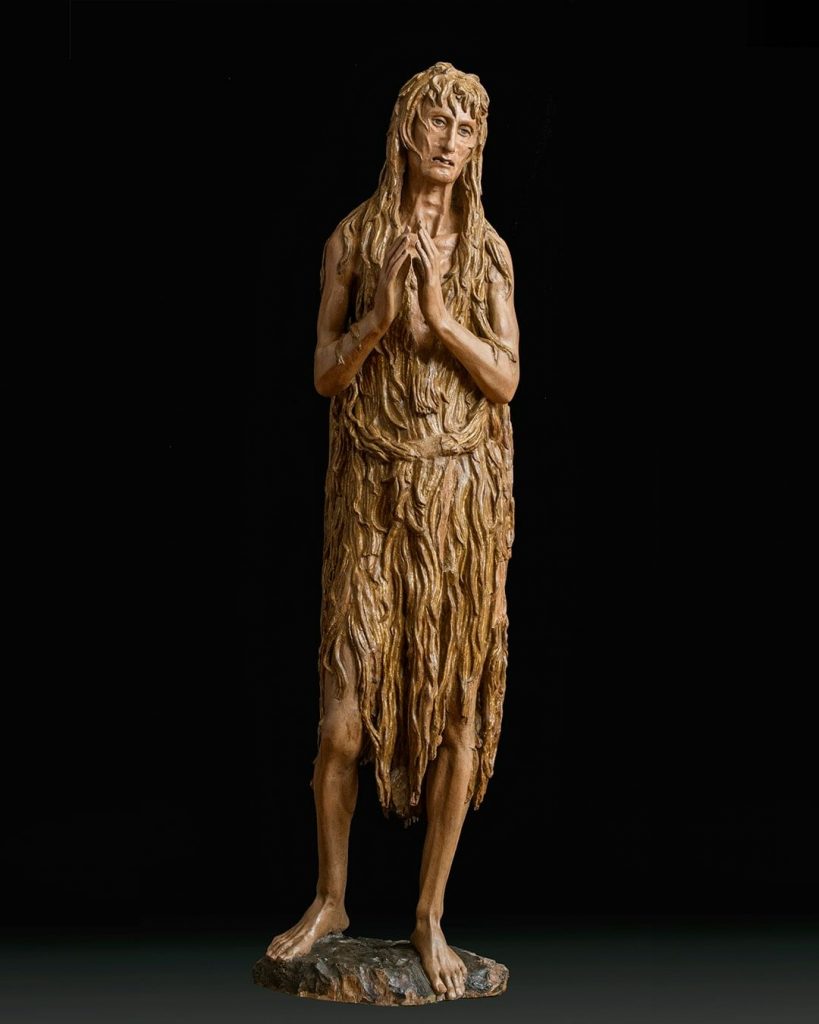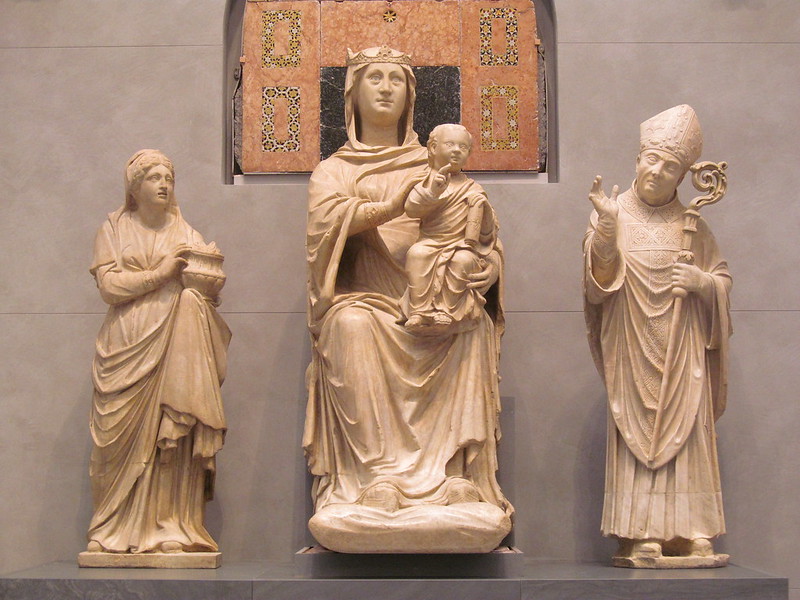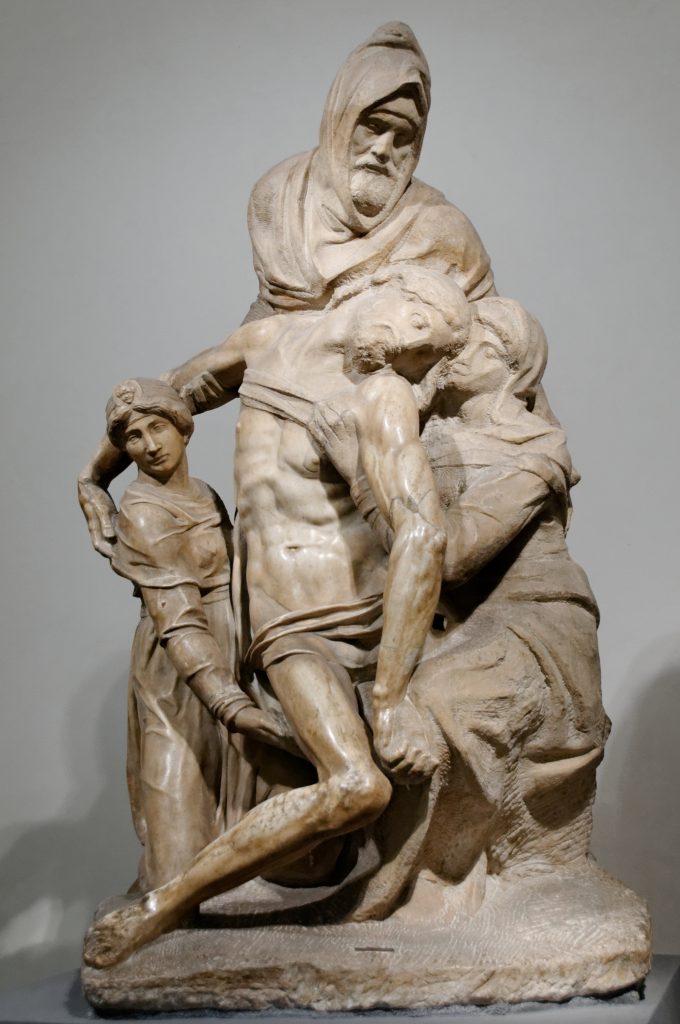l didn’t know what would surprise me on the rainy day when I recently entered the Museo dell’Opera del Duomo. In the past few years, each visit has turned revelatory.

In the room beyond the great hall, which houses a replica of Arnolfo di Cambio’s Madonna with the Glass Eyes (circa 1300), a sign popped out. It said: Puoi toccare. What happened next suggests precisely the changing expectations of the world we are in. My brain stumbled. I bent closer to make out the image of a pointing finger. Was it telling us to touch the statue? What was going on?
Since reopening in 2015, this historical and cultural archive of 750 years of activity in and around Santa Maria del Fiore overwhelms visitors with its major works by Michelangelo, Donatello, Ghiberti, Luca della Robbia, Brunelleschi. Warehouses built in 1296 for projects for the new cathedral literally underlie parts of the present museum. Ghiberti’s molten panels, Michelangelo’s David were poured, pounded and incised there. The museum’s narrative is strong: a Florentine communal identity can be found in the incremental power of dialogue with civic and sacred visions, boundless pride and competition over centuries of building the cathedral.
As I bent again toward the small plaque, my body felt restraint going back to childhood. Go ahead, you can touch, the sign said. A sensation like expecting a dentist’s drill—a preparation for the worst—overtook me. No guard shouted. No alarm shrieked. Looking into the open, healthy face of the Madonna with blue glass eyes, I lightly rubbed the chubby left foot of her little son. It had a sweet arch that I never would have imagined.
How long has the barrier about touch been assumed? In the Sixties, as museum crowds grew, there was a tendency to move art further away from spectators: to enclose it behind bulletproof glass or to wire works with buzzers that turned heads until one stepped back. Protection framed experience. In Florence, a madman broke David’s toe by hurling a hammer. La Pietà in Rome had been defiled by a more violent frenzy. Even before such attacks, the idea of touching art in museums was basically excluded. Exceptions were made as experiments for the blind. Patrons retained the prerogative to stroke art in private, but touch was eliminated as a criterion for public experiences of art. Sculpture was to be known cerebrally through the eye and written narrative. The body was set aside.

Covid took touch hostage. How we hugged, shook hands, pinched fruit in markets was taken for granted until we couldn’t. Covid changed touch to a source of anxiety as more physical communication disappeared among dear friends and family, as well as in public settings. No touching, lots of washing, wiping, withdrawing from a sense of being there. Yet in Covid lockdown, by using our fingers and getting screens to react, touch infiltrated a different space. Touch became tapping, peevish, an insistent order, but also magic taking us out into other places. We knew as we touched screens that we were not really touching anything. We were touching an image of something we might or might not touch in real life. But the illusion became part of our lives.
What did the new experience in the Opera del Duomo Museum reveal?

That rainy day the solicitation felt iconoclastic. Our restraint was an obsolete demand that denied some of the basic power of art. You can touch surely held different memories and experiences for different people. Undoubtedly, too, touching models is not unique to that institution, which, it turns out, introduced them for the unsighted.
Then, in the next room, my hand rubbed Nicodemus’s cheek, his eyes, the face described as Michelangelo’s self-portrait sculpted in his eighties. The crack in the marble that infuriated him as he liberated the Bandini figures from stone, but more, the years of my memories of contemplating that open work at a distance changed as I caressed Nicodemus’s compassionate eyes, and Christ’s lips and Mary’s head. Michelangelo’s stories, his images, had long been part of my experience, and now they were confirmed by connecting them through the intimacy of touching a model. Inner and outer perceptions fused. I was touching part of myself that belonged to the work, touching greatness that was like deep music playing inside and outside myself.
Donatello’s Mary Magdalene was moved to the museum from a dark position in the Baptistery after the flood in 1966. The life-sized wooden sculpture will always exhort us to question our capacity to love. Now another instigating sign: you can touch. The white resin model, in color and texture, is not very close to the wooden original, but it doesn’t matter. Touch is the way you can feel Magdalene’s nails, and slip your hand in between hers, and face her broken mouth, her need to be taken in. All one’s own projections touch her and she responds, sending them back directly through your fingers and eyes.
I knew that my camera could not capture the exchanges of touching. The experience is personal and internal. Over my shoulder, my eye caught a German couple touching Nicodemus. She was caressing Christ’s face and did not respond when her husband told her to look toward his camera. Maybe she didn’t even hear him.
TouchAble at Florence’s cathedral museums and monuments aims to make art inclusive to low-vision persons and the blind. The tactile exhibition and staff training with associations working in this sector, such as UICI (Italian Union of the Blind and Visually Impaired), the Anteros Tactile Museum in Bologna, the Omero Tactile Museum in Ancona and the Stamperia Braille in Tuscany, means that many works of art can be experienced by all. In order to raise awareness of making culture accessible to all, the Opera del Santa Maria del Fiore organizes guided tactile visits for blind and partially sighted people; tactile visits suitable for people with other disabilities or conditions, and blindfolded tactile guided tours for everyone. Call +39 055 2302885 or email accessibilita@operaduomo.firenze.it





